|
|
Comments: This is the first of three uses of Obverse 1 and the first of three uses of Reverse 1840 A in 1841. Reverse 1840 A is transitional, first used for 1840 die marriage OC-1. For both obverse and reverse the third use is a re-marriage of these same two dies. |
Obverse 1 The photo below shows the Obverse 1 attribution grid. 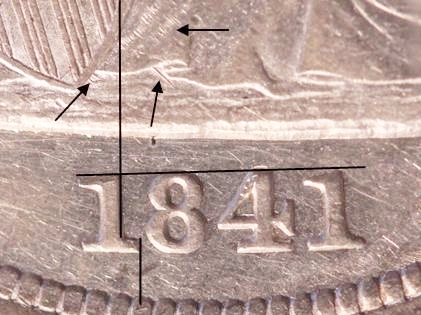 1841 Obverse 1 attribution grid and die lines Obverse 1 exhibits heavy die lines slanting down to the right from the lower right edge of the shield into the gown and rock, shown by the arrows on the attribution grid photo.
The next two pictures show the features characteristic of Obverse 1 die state a. 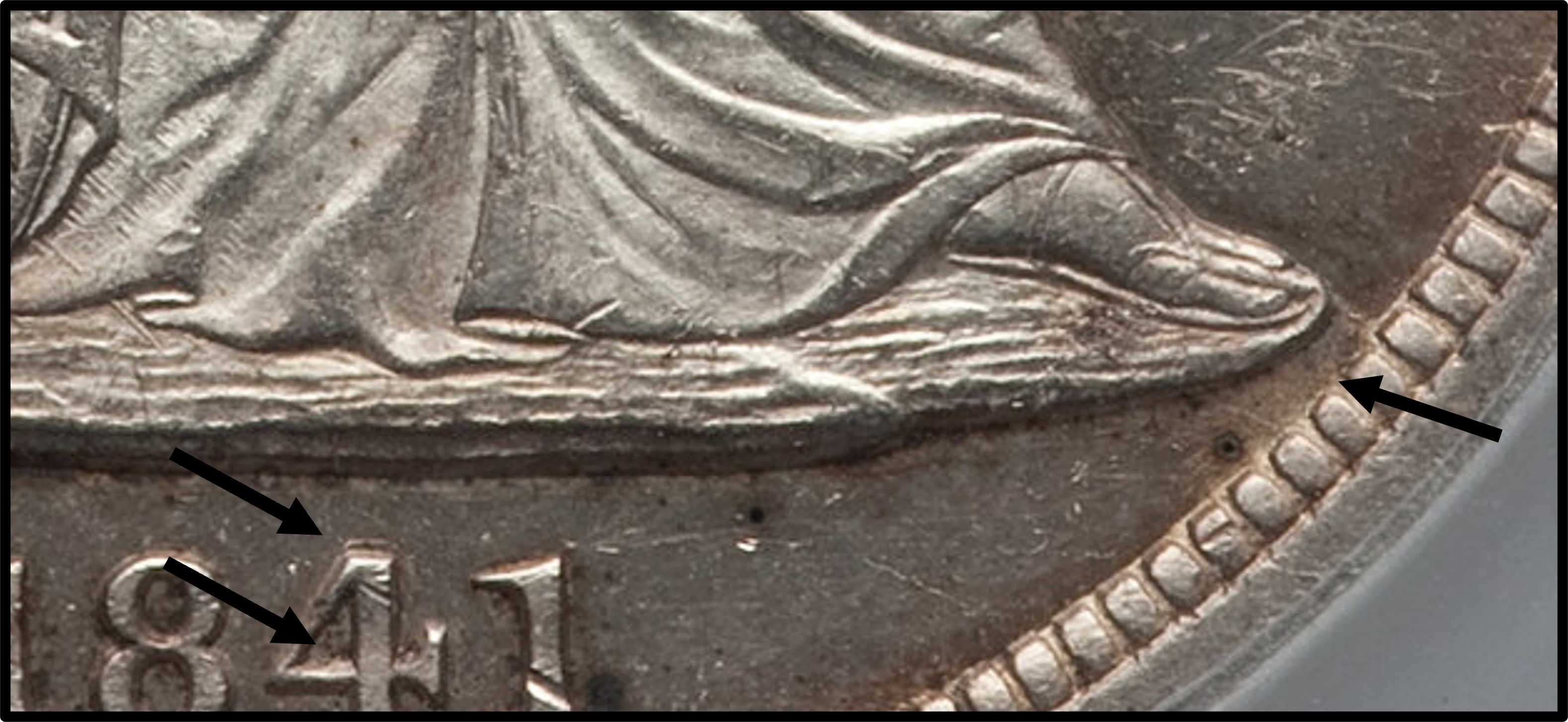 1841 Obverse 1 state a repunched 4 and unfinished area between toe and rim 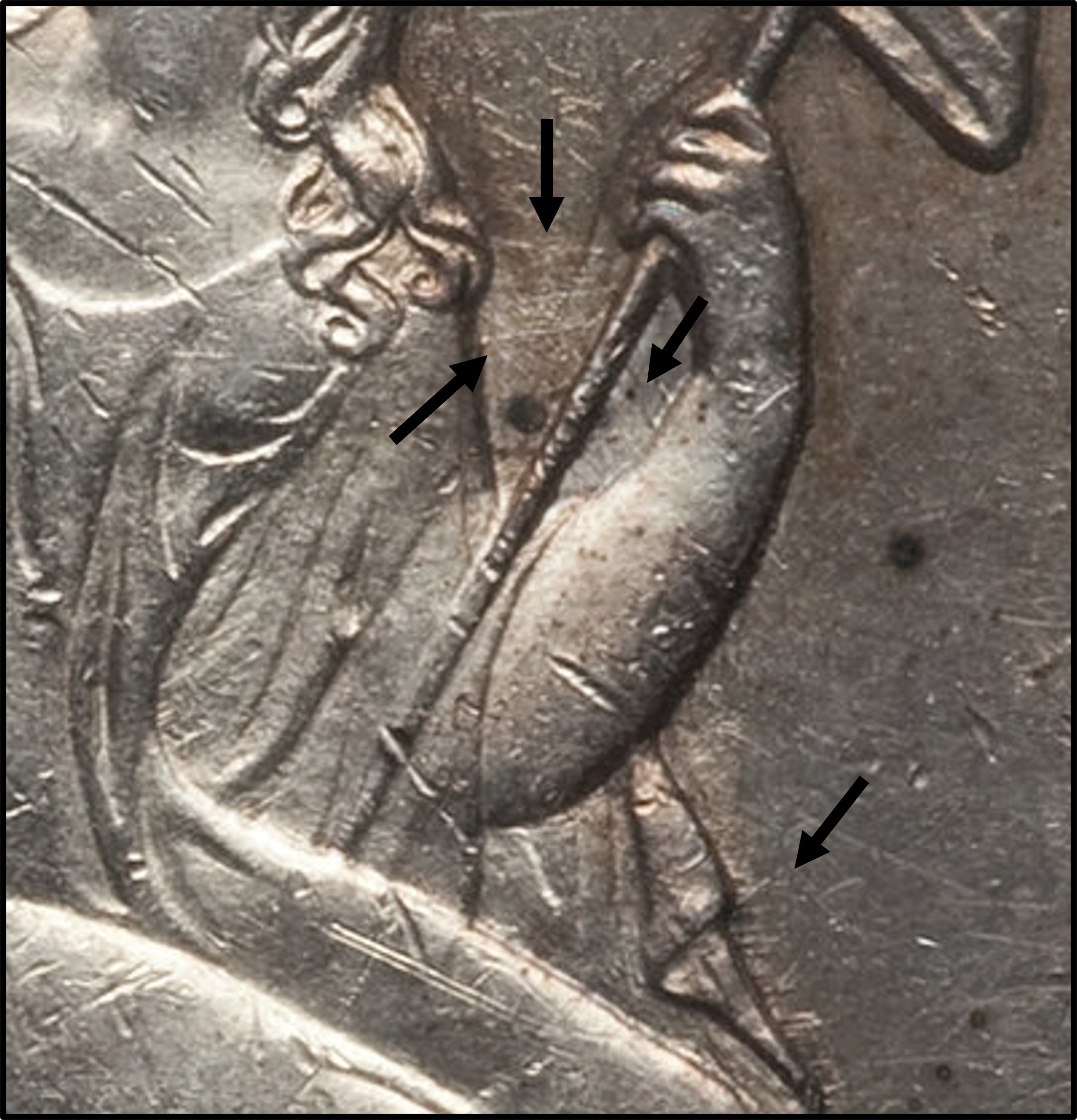 1841 Obverse 1 state a die lines and unfinished areas around arm and drapery The characteristics shown above quickly disappear as the die is polished in later die states. The photo below shows the rim cud which defines state d of Obverse 1.  1841 Obverse 1 state d rim cud |
Reverse 1840 A
Reverse 1840 A is transitional, first used in the 1840 OC-1 die marriage. Minor die markers are
visible on mid- to high-grade examples. The following photo shows these markers, extensions of
the vertical shield lines above and below.
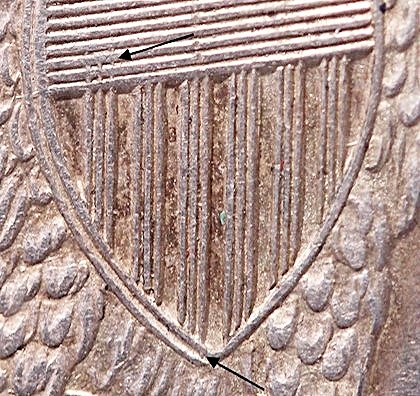 Reverse 1840 A die markers
The photo below shows the clash marks which define states b and c of Reverse 1840 A. 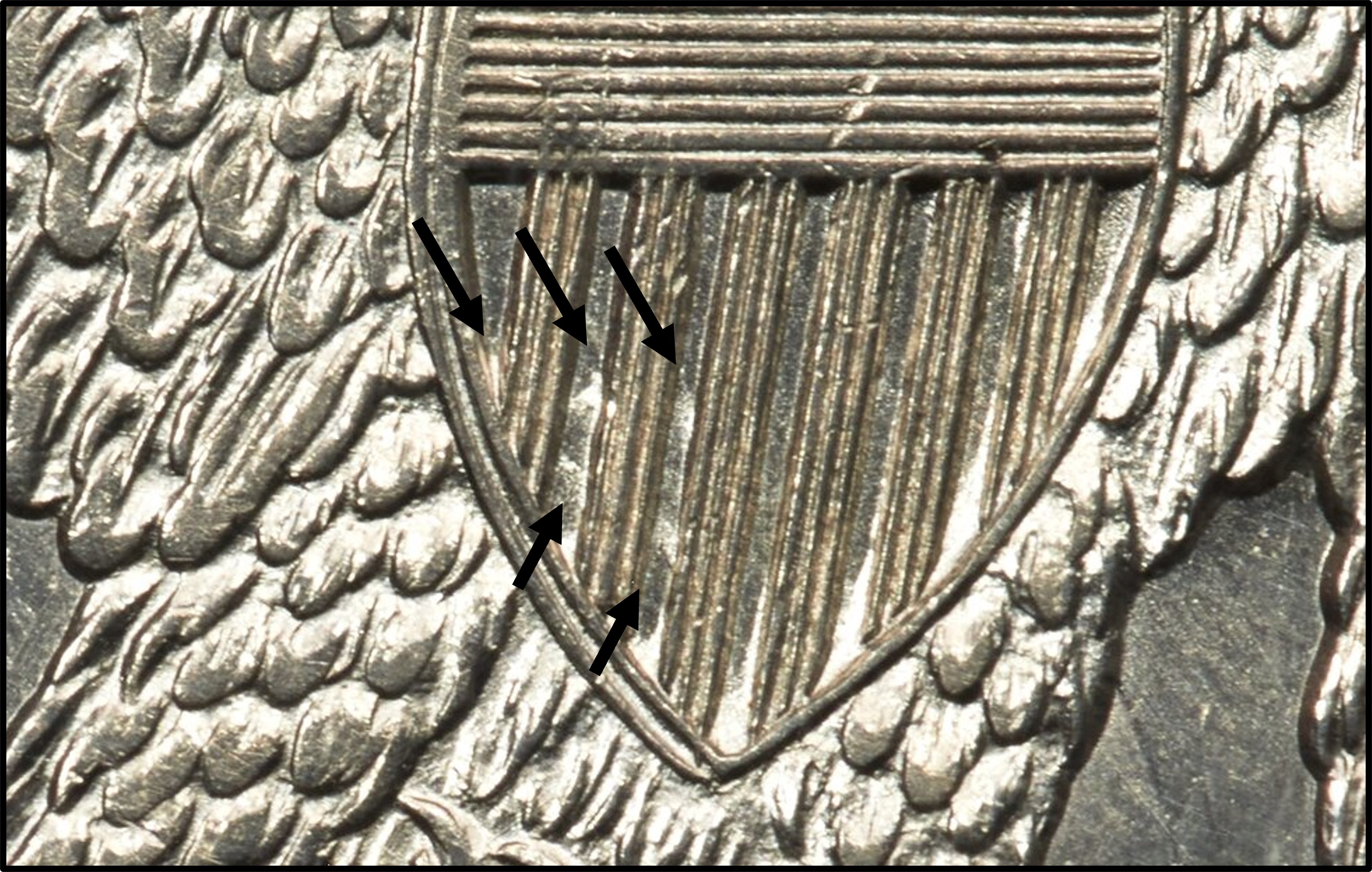 Reverse 1840 A clash marks |
